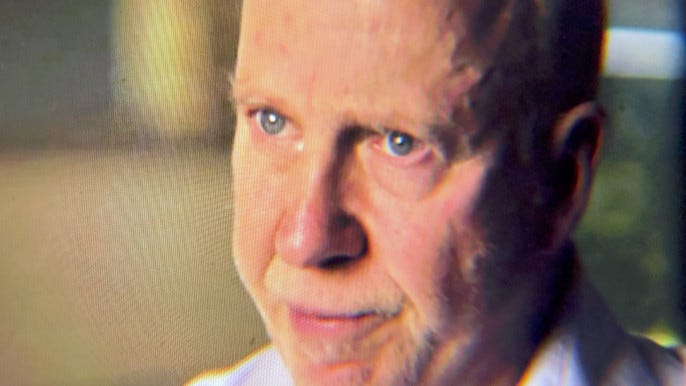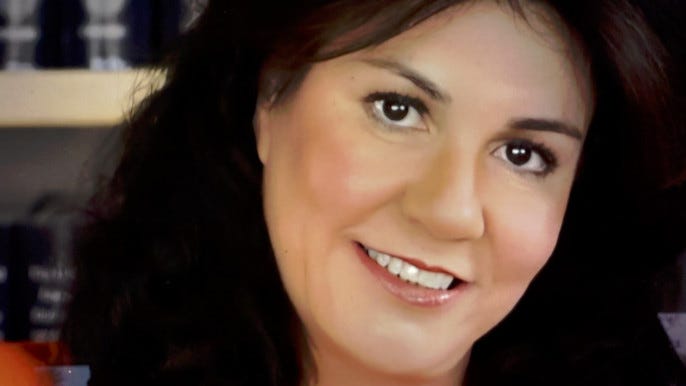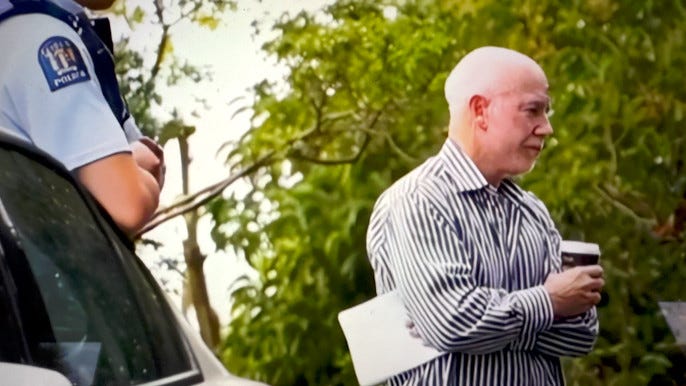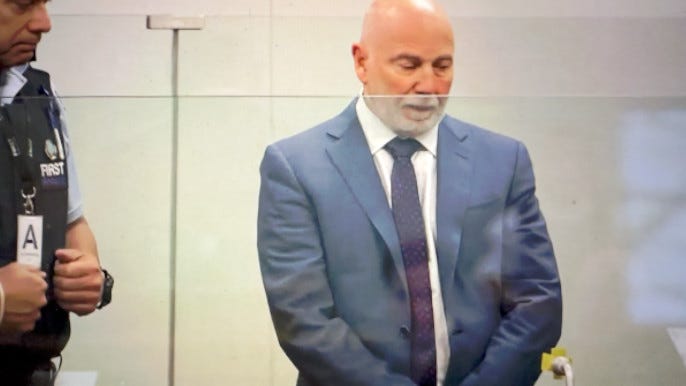Did he do it? A jury of his peers didn’t think so. The makers of ThreeNow’s new documentary Polk: Unanswered Questions, well, they aren’t so sure.
Dubbed the ‘Trial of the Century, ’ the trial of eye surgeon Philip Polkinghorne for the murder of his wife Pauline Hanna, dominated the news cycle and the national conversation for months. Given that the details read like the back-of-the-book blurb of a bestselling thriller, this isn’t surprising.
It had everything that captures public imagination: great wealth, dirty meth, prescription drugs, mental health issues, links to sex workers, affairs and grim death, all revolving around a gripping, scandalous mystery; Did Polkinghorne strangle his wife and then stage her suicide in their lovely home in Auckland’s affluent suburb of Remuera?
This question took eight long weeks to argue and 10 hours of deliberation at Auckland’s High Court to answer. Having covered this in their previous documentary, Polk: The Trial of Philip Polkinghorne, the documentary makers don’t retrace their footsteps here. Instead, the focus is on all the nagging doubts and suspicious circumstances surrounding the case. Of which there are so many, a coroner’s inquest into the death begins next month.
As a journalist who covered the trial explains, these eventual findings will not change the results of the trial. But it may offer some closure. For both parties.
Unlike most in the true crime genre, this one doesn’t rely on flash or narrative to draw you in. The case does that by itself. The doco is straightforward and to the point, and better for it.
Polkinghorne and his legal team declined the invitation to appear in the show, which does make the 45-minute documentary fairly one-sided. But, it has to be said, it is an extremely convincing side.
Myriad questions are raised. Why were there bumps and bruises on the deceased’s body? How exactly did Polkinghorne get that suspicious cut smack bang in the centre of his forehead? Why was her bedroom ransacked? Why had Hanna draped her dressing gown over her shoulders instead of putting it on correctly before her death? How did the blood stain on the staircase beside the crime scene grow larger and shift position over 16 months?
And is the 35grams of meth Polkinghorne stashed around the house a normal amount of meth for a recreational user to have? Can you even be a recreational user of meth?
The documentary also raises the question of how some of Polkinghorne’s recollections from the night are crystal clear (like the show they watched on Netflix, what time they each went to bed, the mental state of Hanna), while others (like how he found her hanging from the balustrade of their two story home and how he singlehandedly got her down before the police arrived) are obfuscated by thick, dense brain fog.
Blocked out trauma could be a reasonable answer here. This is not the answer the doco suggests. By not appearing, Polkinghorne doesn’t provide an answer. He didn’t provide one in court either. Nor did he provide one in the interview he gave the documentary makers months before the trial, footage of which is shown here.
This footage, and footage of his defence lawyer from the trial, give Polkinghorne a chance to share his side of the story. The lawyer is as lawyerly as you’d expect, but watching Polkinghorne talk through the events of that night is fascinating. He’s desperate to convince, but comes across like an amateur in a community theatre production of I Am Innocent.
Subscribe for a free weekly hit of Screen Crack!
But maybe that’s just how he is. His holiday home neighbours in the Coromandel, and Hanna’s sister-in-law, both paint a picture of a man who could be a gregarious host but carried himself with a slightly off vibe. The neighbour doesn’t hold back, labelling him a big phony and recalling the time her builder had to rescue a distraught woman she suspects was a sex worker from his bach, while a colleague at the eye clinic recounts with visible offence the time he enthusiastically raved about meth before suggesting she give it a go.
But a penchant for sex and drugs doesn’t make a murderer. Polkinghorne’s defence that Hanna was in a mental health crisis, stressed out by work, on anti-depressants and popping sleeping pills like candy, is rubbished by her friends, family and workmates. They describe a woman thriving and say that those who testified about her character and mental state didn’t even know her. Of course, there can be big differences between someone’s professional and personal personas.
But there is another question: Why is he so unsure of the sleeping pill’s name when he was the doctor who prescribed them to her?
This is just another question in a documentary and, by extension murder trial full of them. Like so many questions around the case, it remains unanswered.
Of course, the biggest question of the lot was, did he do it? The evidence didn’t conclusively say he did. The sticking point of the case is that the evidence also didn’t conclusively prove Hanna’s death was a suicide.
This answer just leads to another, more perplexing question: if it wasn’t a murder and it wasn’t a suicide, then what was it? Between the two, there isn’t a lot of wiggle room left.
But the jury wasn’t tasked with answering that. They were presented with the evidence and asked whether there was reasonable doubt to find the defendant guilty or not. They found him not guilty, and the documentary shows the moment Polkinghorne is acquitted.
After eight long weeks of what you have to imagine was an incredibly stressful, difficult and painful trial for an innocent man, the relief on his face and the grief for his dead wife are not palpable.
Viewing info
Polk: Unanswered Questions is streaming on ThreeNow
Subscribe for another hit of Screen Crack!








